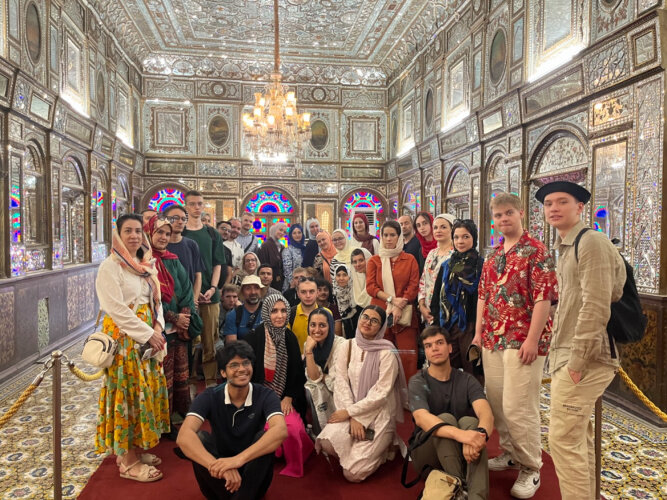Foreign students of Persian language visit Golestan Palace

Tehran - Persian language students hailing from different countries, delved into Iranian history and culture during a visit to the Golestan Palace, a UNESCO World Heritage site on Friday.
The students, who are in Tehran to improve their Persian language skills and take part in the Sadi Foundation’s summer school, spent hours touring various parts of the palace complex, CHTN reported.
Highlights of the visit included Takht-e Marmar, Shams-ol-Emareh, Emarat-e Badgir, and the main palace of the royal ensemble.
Participants from Russia, Thailand, Turkey, Armenia, Kazakhstan, Bosnia and Herzegovina, Georgia, Pakistan, India, Greece, Turkmenistan, and Bangladesh attended this educational visit.
Over the course of the tour, the students explored the architectural marvels and historical artifacts housed within the palace, enhancing their appreciation for Iranian culture.
Golestan Palace, located in the heart of Tehran, is one of the oldest historic monuments in the city and a UNESCO World Heritage site since 2013. This grand complex, whose name means “Palace of Flowers,” epitomizes the artistic and architectural achievements of the Qajar era.
Constructed in the 16th century during the Safavid dynasty, it underwent significant modifications and expansions under the Qajar rulers, particularly Agha Mohammad Khan Qajar, who established Tehran as the capital of Iran. The palace served as the royal residence and a center for Qajar ceremonies and receptions, reflecting a blend of Persian and European architectural styles.
The complex comprises several impressive structures, including the Marble Throne Hall (Takht-e Marmar), adorned with intricate tile work and carvings; the Shams-ol-Emareh, a striking edifice that was one of Tehran’s tallest buildings at the time; and the Windcatcher Building (Emarat-e Badgir), known for its traditional Persian ventilation system. The main palace houses exquisite rooms and halls decorated with elaborate stuccoes, mirror work, and paintings.
Golestan Palace not only showcases the opulence of the Qajar period but also stands as a testament to Iran’s rich cultural heritage and its historical evolution through centuries.
XF/AM
Leave a Comment